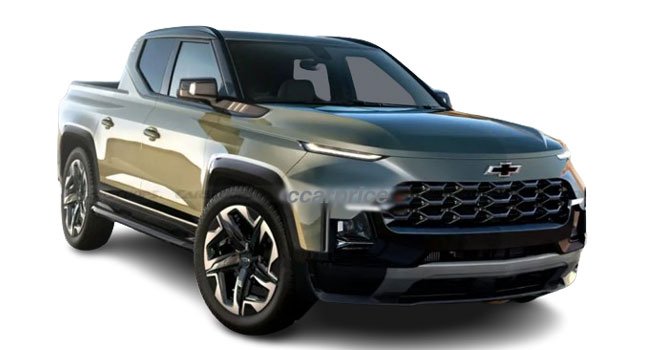Ford’s Maverick has emerged as a star performer, captivating the market with its compact size and robust sales figures. Clocking in at an impressive 94,058 units sold in 2023 alone, the Maverick continued its triumphant stride into 2024, with an astounding 25,705 units flying off the lots. This meteoric rise, marking an astonishing 84.7% surge compared to the preceding year, begs the question: Why hasn’t GM ventured into this lucrative segment?
Delving into the intricate web of automotive strategy, it’s revealed that GM indeed toyed with the idea of joining the fray, albeit with a twist towards electrification. However, recent murmurs from the automotive grapevine suggest that GM has opted to shelve its plans for a compact electric pickup, directly pitting itself against Ford’s Maverick. Citing concerns over the reliability of GM’s Ultium battery platform, coupled with a softening in the demand for electric vehicles and logistical delays in product rollouts, this strategic pivot signals a reevaluation of priorities within the hallowed halls of GM’s executive suites.
In the wake of this paradigm shift, GM’s formidable leader, Mary Barra, has hinted at a recalibration of the company’s trajectory, steering towards the adoption of plug-in hybrid powertrains in the immediate future. This pivot, away from the initial trajectory of a wholesale transition from internal combustion engines to fully electric propulsion systems, reflects a pragmatic response to the dynamic currents of the automotive market.
However, amidst these strategic recalibrations, one cannot help but ponder the fate of GM’s foray into the realm of compact pickups. The resounding success of Ford’s Maverick serves as a compelling testament to the viability of this segment, urging competitors like GM to not just dip their toes, but to dive headlong into the fray.
Charting a course forward, GM could chart a path akin to Ford’s success, crafting a platform that seamlessly integrates plug-in hybrid and fully electric capabilities. This adaptable approach not only future-proofs GM’s offerings but also positions the company to swiftly adapt to any potential resurgence in demand for electric vehicles. Drawing inspiration from the playbook of industry peers like Stallantis, which boasts the highly versatile STLA Large platform housing options for both electric and internal combustion powertrains, GM could carve out a niche in the fiercely competitive landscape of compact pickups.
Turning our gaze eastward, the burgeoning automotive market in China offers valuable insights into the potential configurations of GM’s envisioned plug-in hybrid powertrains. Take, for instance, the new Chevrolet Equinox, which pairs a potent 1.5-liter turbocharged four-cylinder engine with a robust 188 hp electric motor, bolstered by a lithium iron phosphate battery pack. This fusion of combustion and electric power not only delivers commendable performance but also underscores the adaptability and versatility inherent in GM’s proposed strategy.
As the automotive industry hurtles towards an electrified future, GM stands at a pivotal crossroads. By embracing innovation, adapting to shifting market dynamics, and leveraging insights gleaned from both domestic and international markets, GM has the opportunity to not just survive but thrive in the competitive arena of compact pickups. The stage is set, the gauntlet thrown – the choice now lies in GM’s hands to seize the moment and redefine the rules of the game.
Stay tuned for the latest 2026 Chevrolet Compact PickUp Price in New Zealand.
Check the Most updated Price of Chevrolet Compact PickUp 2026 Price in New Zealand and detail Specifications, features and compare Chevrolet Compact PickUp 2026 Prices Features and Detail Specs with upto 3 Products

